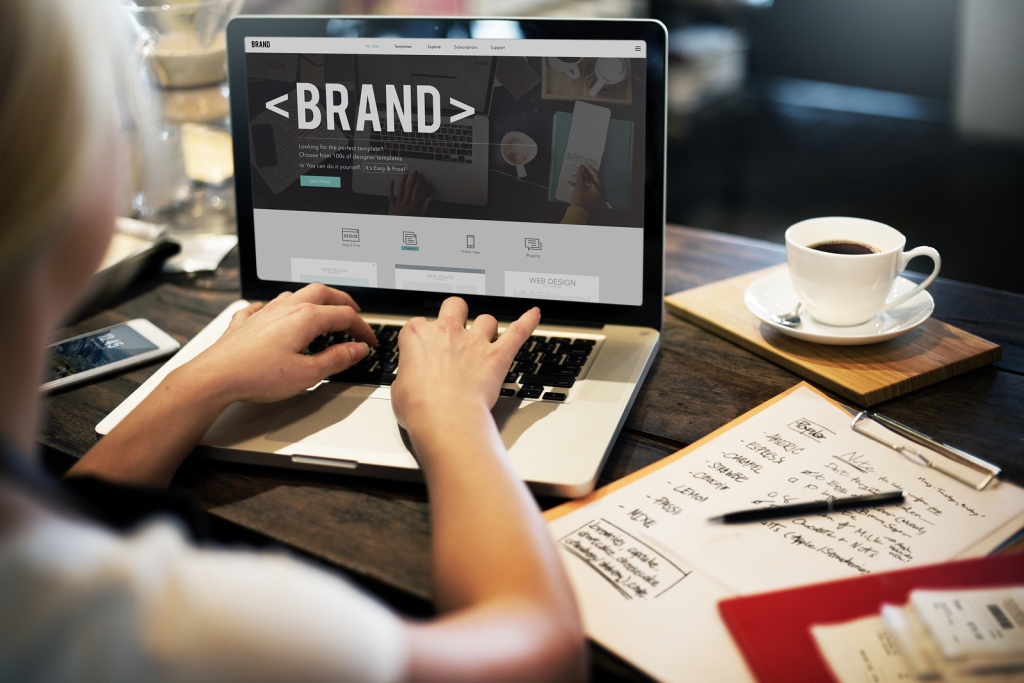When you hear the word “branding,” you probably think about logos and slogans. But while an eye-catching logo is certainly part of a business’s brand, there are several elements to consider during the brand design process (especially when building a website for your business). These elements include fonts, colors, images, and the messages and wording in product descriptions, blogs, and other copy.
A cohesive brand design is an important part of establishing the online presence for your small business. It can mean the difference between a brand that draws in shoppers, and one that has people scratching their heads in confusion:
While the design process might seem a little daunting (particularly if graphic design isn’t your thing), it can help break down the process to see what’s involved.
Know your audience
The brand design process begins with having an understanding of your fans. Consider creating a shopper persona — an imagined person based on your ideal shopper. Maybe it’s a woman in her 20s or 30s. Consider her likes and dislikes. Where does she live? Where does she work? What does she do for fun? When you’re ready to dive deeper into creating a shopper persona, the Buffer App Blog offers a free guide and template that you can use to build it out.
Once you’ve created a persona, it will be easier to choose brand design elements that will appeal to your shoppers. Are your fans edgy and attracted to the industrial look? Are they nature lovers? Or, are they free spirits who love everything whimsical? This information will help guide you when choosing the fonts and colors to use for your logo, website, and business cards, as well as images and messaging to use across your site and social media pages.
For example, if you own a shop that sells organic bath and body products, your shopper persona — let’s call her Vivian — might be interested in yoga, meditation, exploring the outdoors and natural landscapes, and drinking green smoothies. Vivian dislikes clutter, traveling to gritty cities, and looking unkempt. To appeal to Vivian, your brand design elements might convey the serenity of a quiet remote beach, with a simple design that incorporates plenty of white space, light, earthy colors, and flowing fonts.
Should you bring in help?
It’s easy to fall down the rabbit hole of designing your own website, finding the perfect font for your images, and agonizing over your business’ tagline.
To ensure that you don’t get stuck tweaking your logo and putting off your site launch until your brand is “just right,” set a deadline. Done is better than perfect. You can always go back and make changes to your website (or branding) later on. It’s fairly common for businesses to “rebrand,” or change their overall look and feel, especially if their shopper bases change or their businesses focus on something new.
At this point, you might want to hire a graphic designer to assist with your brand design elements. Perhaps the biggest consideration in whether or not to hire a designer is the associated cost. Depending on the scope of the project, a graphic designer can charge from less than $100, to thousands of dollars. Of course, hiring someone to design your website from scratch will cost considerably more money than hiring someone to only create a logo or one piece of your business. Upwork offers a breakdown of how long design projects generally take versus how much money you can expect to pay for them.
One strategy is to use a free or premium WordPress.com theme when designing your website. Doing this can save you a considerable amount of money, which you can then invest in hiring someone to create your logo. As your small business grows and continues to bring in money, you can always perform an overhaul of your website at a later time.
The same goes for logos. There are websites that allow you to purchase premade logos at affordable prices. While these sites may sell the same general logos to other business owners, you can at least save yourself some time and money until you feel ready to invest in more personalized designs.
Finally, no matter how you go about creating your business’ brand, make sure that you stay consistent with your brand design elements across all platforms, from your website to your social media accounts. Use the same logo, fonts, colors, and messaging across all of your pages so that site visitors will recognize your brand regardless of the platform they use to explore it. Before you know it, you’ll be on your way to building a solid small business with loyal shoppers that make strong connections with your brand.

